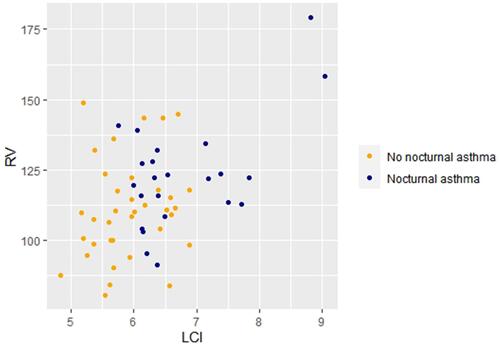Figures & data
Table 1 Patients‘ Clinical Characteristics
Figure 1 Odds ratio of nocturnal symptoms based on the severity of lung function impairment: Odds of having nocturnal asthma in regard to severity of central airflow obstruction (A), spirometric measures of small airway function (B) and non-spirometric measures of small airway function (C). OR with lower and upper borders of 95% CI of each measure are outlined in the Online Supplementary. Cutoff values of FEV1 and FEV/FVC were determined at lower limit of normal, the 50th, 25th, and 10th percentiles. For FEF25-75 and FEF50 cutoff values were 75th, 50th, and 10th percentiles, where the 10th percentile indicates more severe large and mid-expiratory airflow obstruction. Cutoff values for R5-20, X5Hz, RV/TLC, sReff, delta N2 and LCI were at the 50th and 75th percentiles, where the 75th percentile indicates more severe SAD.

Table 2 Clinical and Lung Physiology Characteristics of Asthma Patients According to the Frequency of Nocturnal Symptoms
Table 3 Principle Component Analysis
Figure 2 The correlation of nocturnal asthma with air trapping and ventilation heterogeneity in patients without airflow obstruction: A biplot demonstrates a trend of increased air trapping and ventilation heterogeneity in patients with nocturnal asthma, who did not have airflow obstruction based on spirometry.

